Disaster Strikes – The bowspit reveals itself – May- June 2016
It is May 2106. I have left my job and we have moved out of the apartment and onto the boat. There is no turning back. Sophia is out of the water for her routine bottom painting and other work best done on “the hard”. The list was long and was going to take a couple of weeks, including changing zincs (zincs prevent corrosion due to stray electricity), painting the waterline, painting the anchor chain and varnishing places that are hard to get to pierside.
One of the items to refresh the varnish (actually, Cetol a synthetic varnish, for purists) was the bowspritI moved the scaffolding under the bowsprit and began a light sanding. Before too long, I saw some wetness appear on the sandpaper and then drops of water. “Not a good sign”, I say to myself. Taking a screwdriver, I punched a hole four inches into the bowsprit. We obviously had a massive rot problem.
I punched around some more and then consulted the local carpenter shop, Phipps Boatworks. Buster Phipps had done plenty of small jobs for me and I consider him the best on the Chesapeake Bay at his craft. Buster first suggested we use epoxy to fill the gaps caused by the rot. The bowsprit was made with alternated planks of teak and holly, laminated together. It appeared that the holly, a less resilient wood, had rotted out.
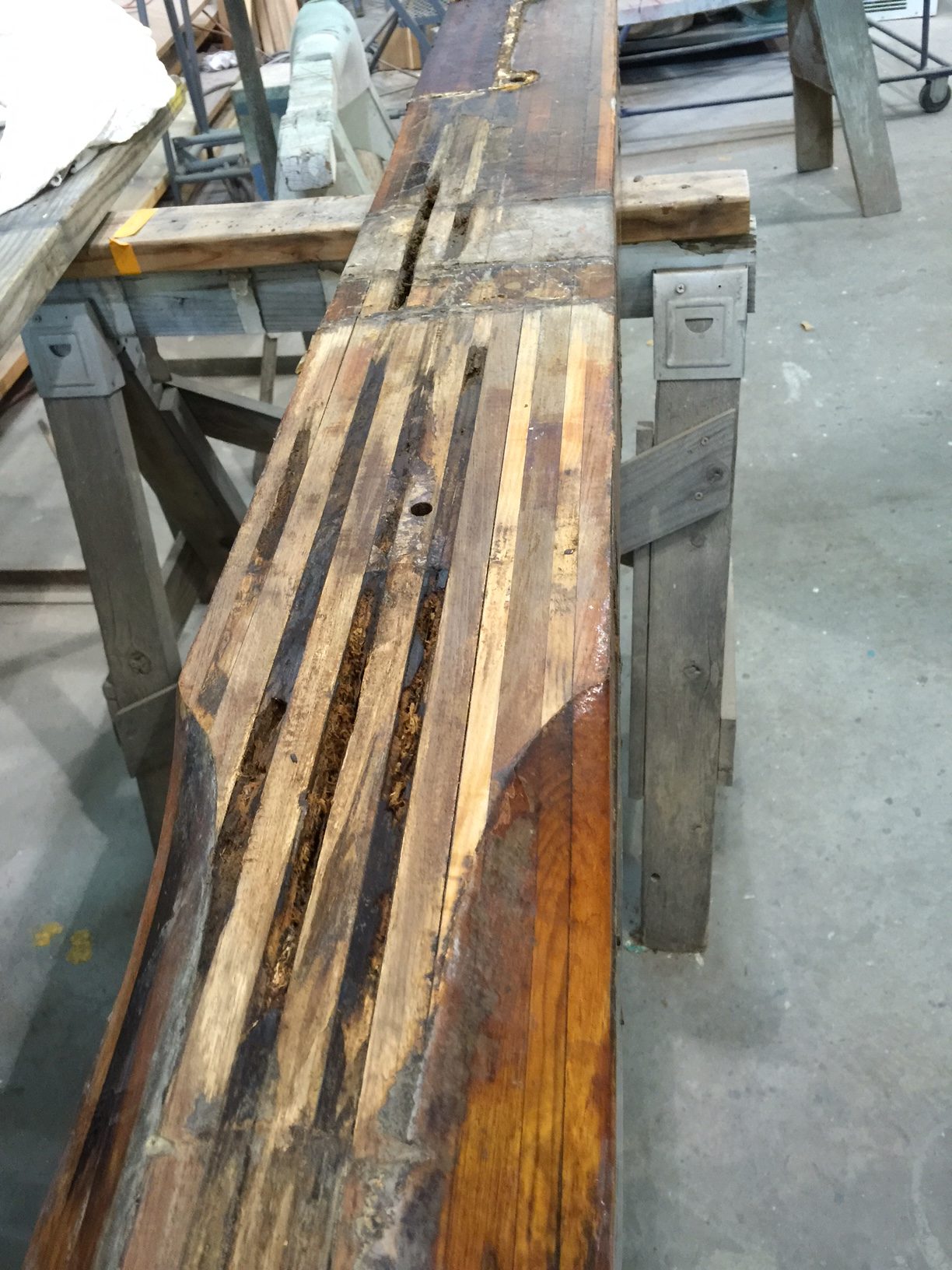
But as the week went on, we found other sections which indicated that we had rot across the entire length of the bowsprit and I could not see us saying with such a weakness.
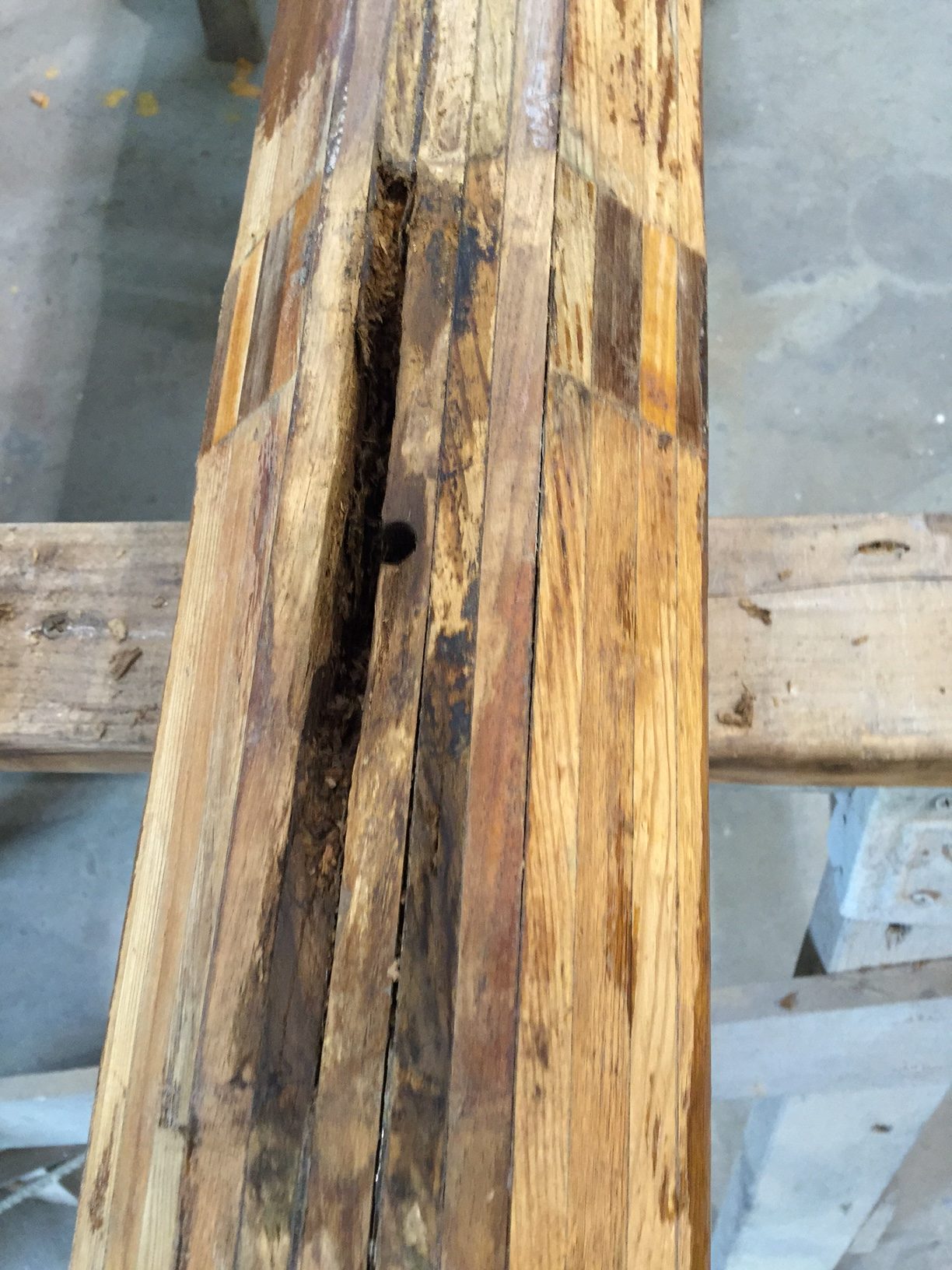
We began to discuss a replacement. Teak, a mix of teak and something, Sitka Spruce or Douglas Fir. Maybe replace with a stainless-steel bowsprit and never worry about this again. In the end, we wanted to retain the classic look of Sophia and wanted to make sure this never happened again, so we went with a full teak bowsprit. This was more expensive than the other wood options, but the material costs were only a fraction of the labor costs and therefore the difference was not significant.
Buster said he was busy but thought it would take about four weeks to build and install a new bowsprit. He ordered the wood and, with the help of our rigger, Steve, took off the bowsprit with its platform and the anchor windlass on May 7th. Meanwhile, I finished the work list and we launched to boat and went pierside.
Buster’s brother did most of the work. He was a master craftsman. Each laminate section had to be planed to exact specifications, and was thicker at the base than at the tip, forming a taper. The laminates were glued together to form the bowsprit. At the one end, the square was formed into an octagon and then to a round end, completed by May 13th.
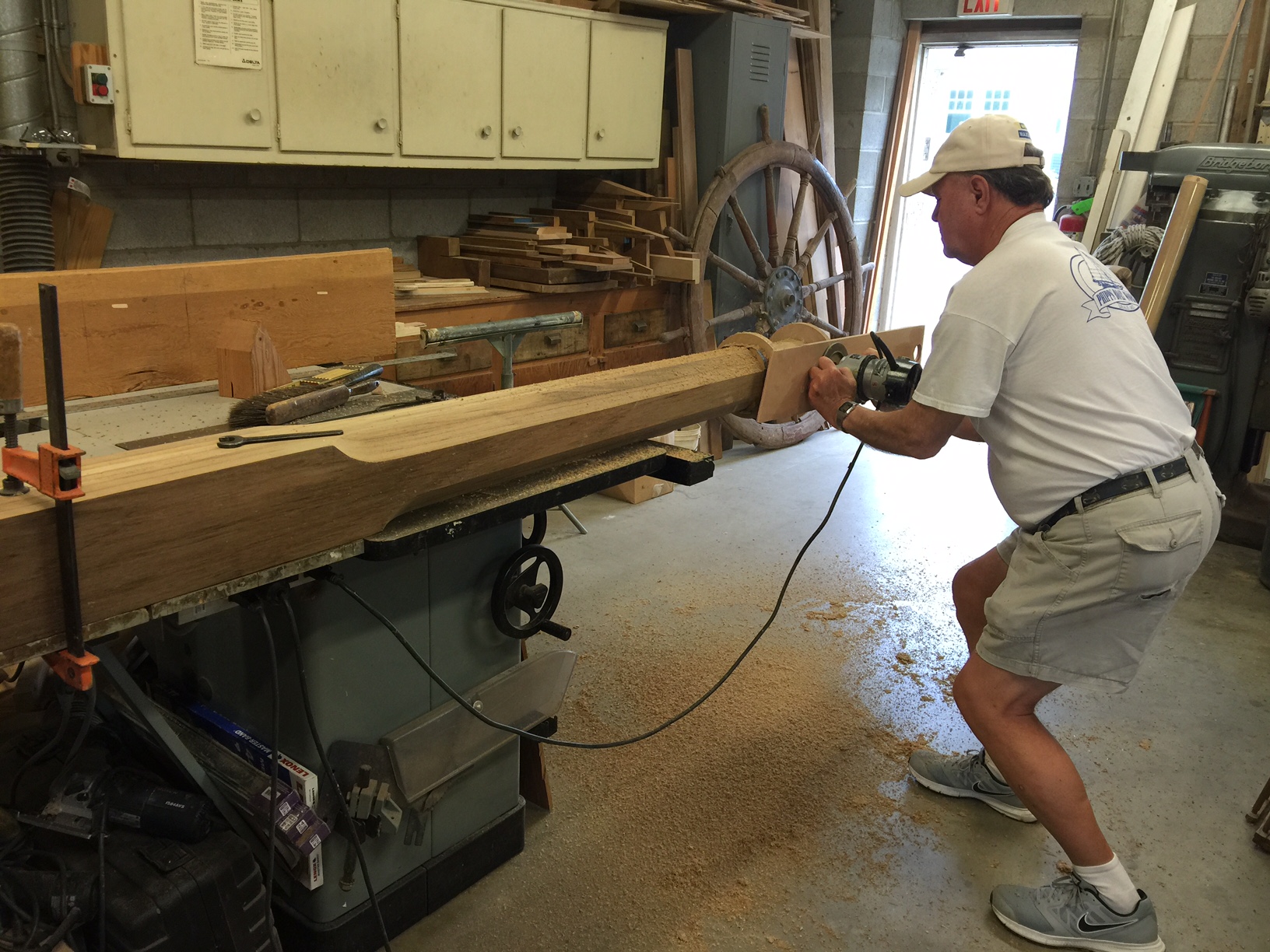
Holes had to be exactly lined up to fit the anchor windlass and the platform. The completed bowsprit was epoxied and then varnished with ten coats of high gloss, UV resistant varnish finished about May 18th
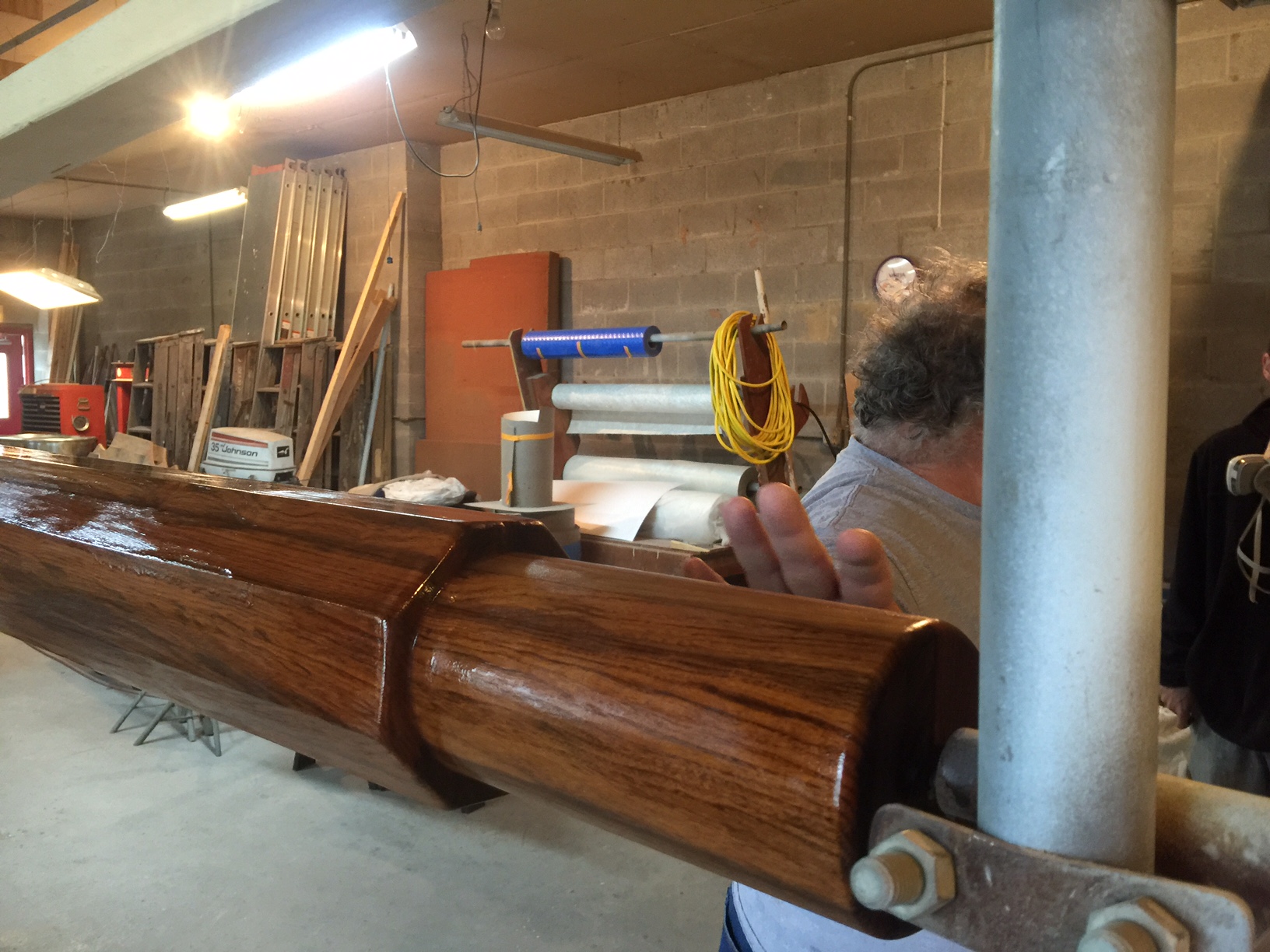
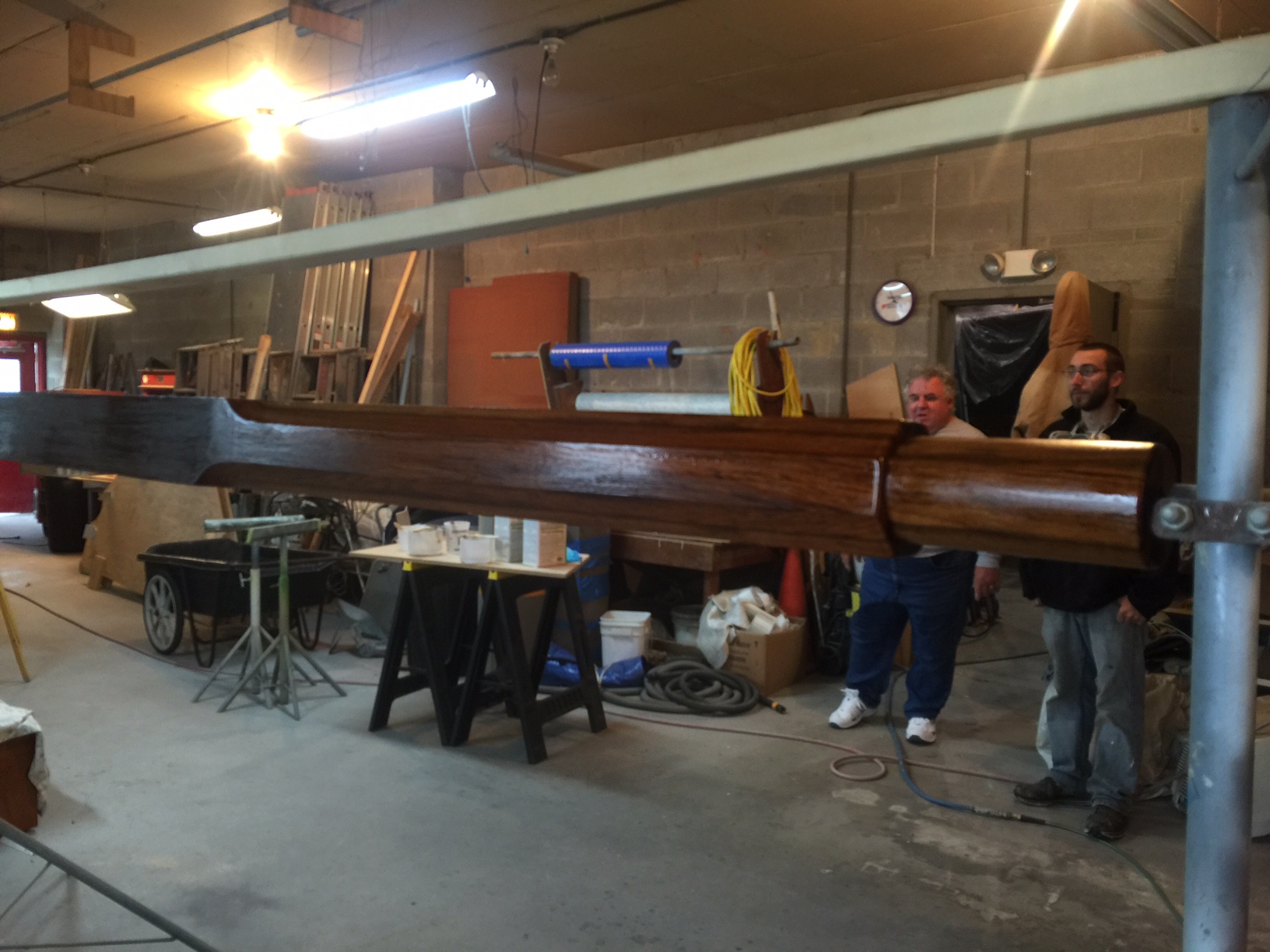
A stainless steel cap was added so I would not nick the end if I hit a dock.
The anchor windlass was repainted and the platform was repaired (I should have Buster re-fresh the Cetol, but did not think about it)
The bowsprit, platform, and anchor windlass were reinstalled on June 7th and we were ready to go and try to get our plans back on track.
The cause of the rot, I believe, was a blockage, discovered by Buster and his crew, of a couple of drain holes under the platform. Without those drain holes, water collect in a space in the platform and slowly soaked into the wood. The blockage was probably caused by me putting on too much Cetol and not clearing those drain holes. I saw evidence of this the previous year, but did not recognize it as a problem. The new bowsprit cost about $10,000 to build and install.
